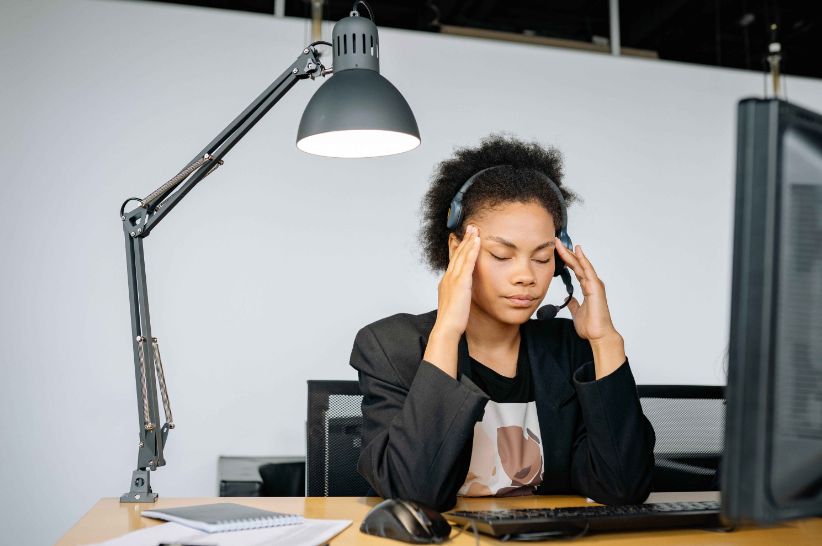In an era dominated by digital screens, the rise of computer vision syndrome (CVS) has become a global concern. A recent study revealed a pooled prevalence of 66% for computer vision syndrome worldwide, with as little as three hours a day on digital devices contributing to the development of CVS.
These numbers make it imperative for individuals across various demographics to adopt measures that reduce eye strain. Here are four easy tips to help you safeguard your visual well-being while using your digital devices.
Tips for Reducing Eye Strain When Using Your Devices
Optimize your setup
The arrangement of your workstation plays a crucial role in preventing eye strain. Ensure that your computer screen is positioned 18-30 inches away from your eyes to reduce the risk of visual fatigue. You can also invest in ergonomic tools, such as a laptop stand. The compact option from Topwork can adjust to four different angles so that you can draw on tablets, type, read, and work with peripherals with ease.
Additionally, arrange your computer screen at a 90-degree angle to windows to minimize glare, and avoid placing it directly in front of or behind a window. Positioning screens to the side of light sources, like fluorescent lights, can further reduce eye strain caused by glare.
Lessen blue light exposure
Blue light emitted from screens can contribute significantly to eye strain and disrupt sleep patterns. This can be quickly combated by wearing blue light glasses, with modern lens technology like the Crizal Prevencia coating filtering up to 20% of blue-violet light. Transition lenses can especially benefit the everyday worker by blocking 100% of UV rays on the way to the office, and filtering the blue-violet light between 400 and 455nm while in front of the computer.
For those with complex set-ups, like gamers, you can consider upgrading your screen to one with built-in protective features. The UPERFECT y Vertical Monitor offers blue light and anti-glare filters. These protective properties not only contribute to eye health but also enhance the overall gaming experience.
Upgrade your gear
Beyond blue light filters, advanced features like 4K resolution and local dimming zones often come with the newest equipment. For instance, TCL’s latest large screen, the QD-Mini LED TV X955, boasts over 5,000 full array local dimming zones and 5,000 nits of peak brightness, providing exceptional picture quality. Programmers or graphic designers, in particular, can benefit from the optimized clarity, contrast, HDR support, and vibrant colors. These can also contribute to minimizing eye strain during extended gaming sessions.
Otherwise, consider using larger-sized devices, such as laptops ranging from 13 to 14 inches, especially for students and remote workers who require portability without sacrificing screen real estate. If you are unable to upgrade your gear, then make the most of your device’s display settings to ensure optimal visibility. Enlarge text and images on your screen to reduce eye strain caused by squinting or straining to read small fonts.
Adopt healthy lifestyle habits
Beyond optimizing your workspace, integrating healthy lifestyle habits into your routine is paramount for long-term eye health. The 20-20-20 rule serves as a simple yet effective strategy to alleviate eye strain. Every 20 minutes, take a 20-second break and shift your focus to something 20 feet away. This practice reduces eye fatigue and contributes to overall visual comfort.
Stepping outside regularly is another crucial habit that can significantly benefit your eyes. Exposure to natural light not only provides a break from the artificial glow of screens but also supports the health of your eyes. Natural light helps regulate your circadian rhythm, enhancing your overall well-being and minimizing the adverse effects of prolonged screen time.
By incorporating these tips into your routine, you can create a more eye-friendly environment, promoting long-term visual health and well-being. For other easy-to-follow solutions to your tech-related problems, check out our blogs on eTechShout.






